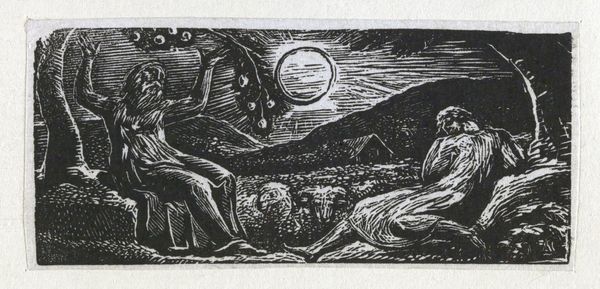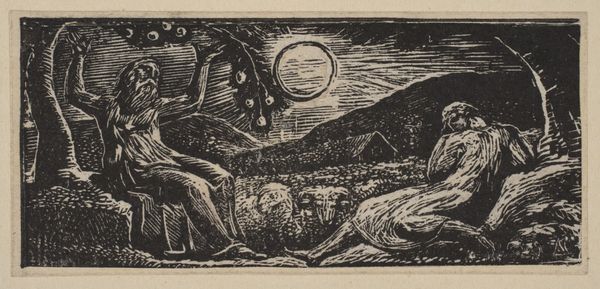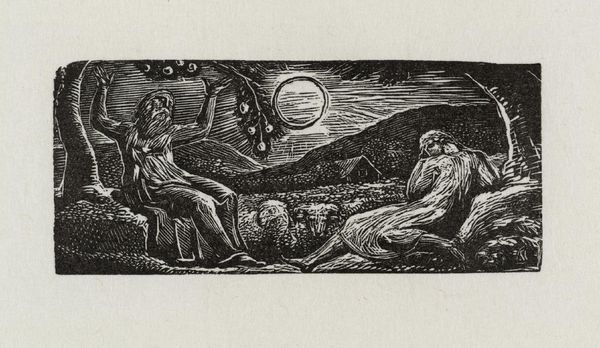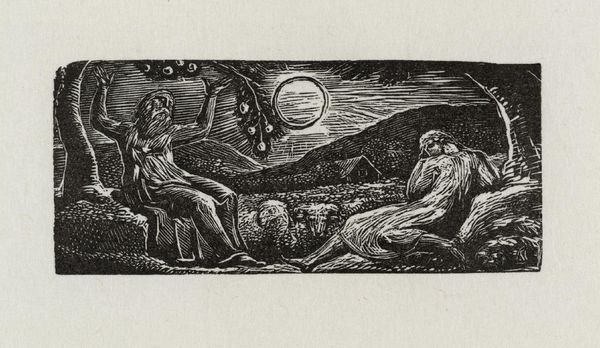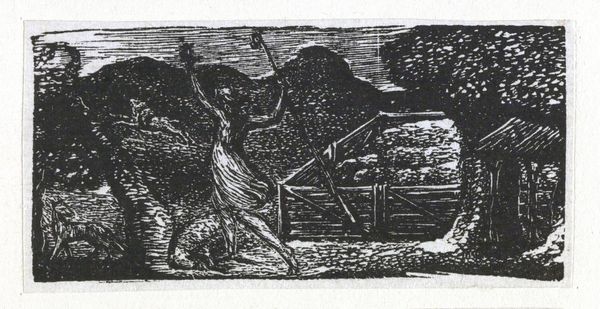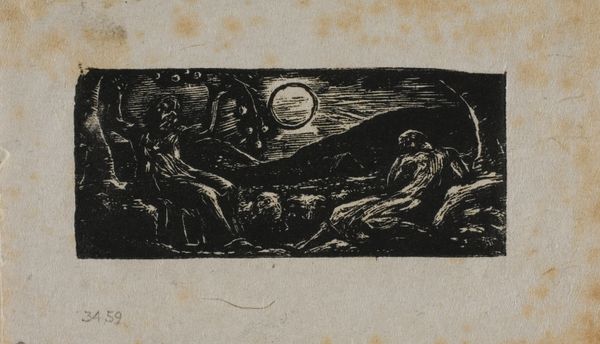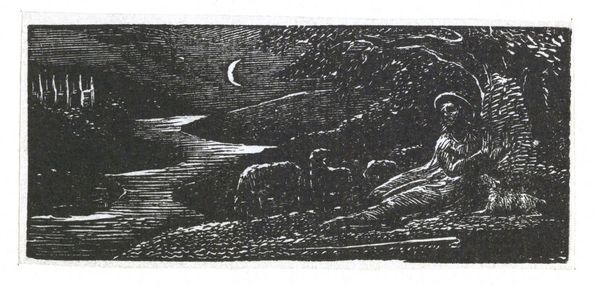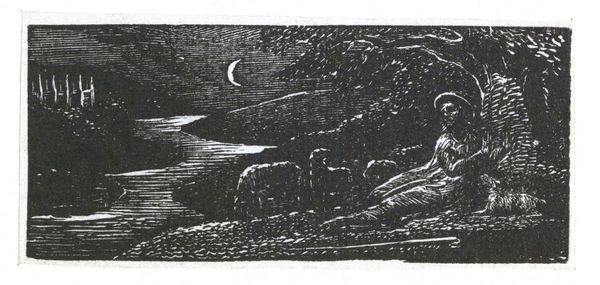
Dimensions: image: 33 x 75 mm
Copyright: NaN
Curator: William Blake's wood engraving, "Thenot and Colinet Converse Seated between Two Trees," presents a pastoral scene in miniature, part of his illustrations for Thornton's Virgil. Editor: It feels ancient, almost primal. The stark contrast and the figures' gestures evoke a sense of mythic storytelling. Curator: Blake often used classical forms to explore contemporary social and spiritual themes, so this pastoral setting becomes a stage for ideas about nature, innocence, and perhaps, critique of industrializing society. Editor: Look at the seated figure on the left, arms raised towards the light. It’s like an invocation, or a plea. Light as symbolic of enlightenment, maybe? Curator: Precisely, and the print medium made it accessible to a wider audience, reflecting Blake's desire to engage the public sphere with his visionary art. It is at the Tate. Editor: A powerful piece, especially when we consider the socio-political undercurrents Blake infused into seemingly simple imagery. Curator: Indeed, a small piece with grand ambitions in the public sphere.
Comments
tate 8 months ago
⋮
http://www.tate.org.uk/art/artworks/blake-thenot-and-colinet-converse-seated-between-two-trees-a00113
Join the conversation
Join millions of artists and users on Artera today and experience the ultimate creative platform.
tate 8 months ago
⋮
Samuel Palmer was the most important of Blake’s followers, known as the Ancients. Palmer first met Blake in 1824. He described these illustrations to an imitation of the First Eclogue by the Roman poet Virgil as ‘visions of little dells, and nooks, and corners of Paradise’. Palmer’s art was particularly influenced by them. These prints appealed to the Ancients because they were the result of Blake’s experiments with a new medium; he had never engraved on wood before. Even at the age of sixty-four he wanted to make further explorations in his art. Gallery label, August 2004
